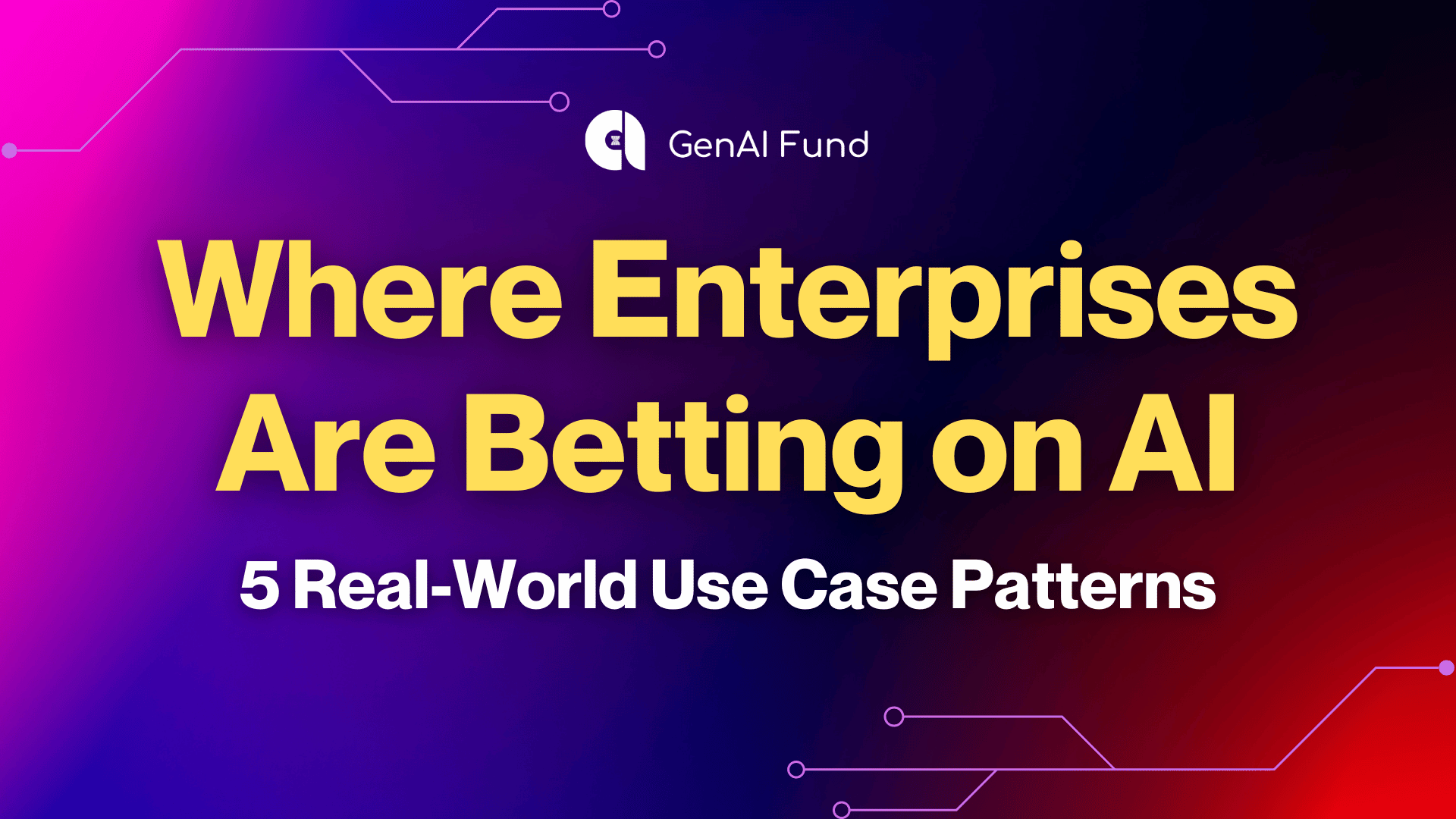5 Enterprise AI Use Case Patterns That Show Where Real Demand Is Emerging
Enterprise AI use case opportunities are emerging fast — and startups are in a prime position to lead. At GenAI Fund, we work closely with enterprises across Southeast Asia to explore where AI can create real business value, not just experimental hype.

Through this work, we’ve reviewed and analyzed dozens of enterprise AI use cases across the region.
And here are five use case themes that are gaining traction — and where opportunities for startups are quickly emerging.
1️⃣ The Rise of the AI Co-Pilot
Instead of full replacement, AI is being deployed to augment expert employees. These systems act as assistants, surfacing insights and automating grunt work so humans can focus on high-value strategy.
👉 Examples: AI assistants for sales reps recommending the next best action, advisory tools for financial agents, and natural language dashboards that let business users query data without a BI team.
2️⃣ Hyper-Personalization at Scale
Enterprises are moving beyond simple customer segments. AI is being used to create a “digital twin” of each customer, enabling hyper-personalized product recommendations, dynamic pricing adjustments, and proactive issue resolution.
👉 Examples: Tailoring service offerings to individual client profiles, guiding users through personalized digital journeys, and dynamically generating marketing content that resonates with specific audience segments.
3️⃣ Intelligent Process Automation (IPA)
AI is now doing more than just simple tasks. It is tackling complex cognitive and operational work that were previously immune to automation, drastically reducing manual effort and error rates.
👉 Examples: Streamlining complex back-office functions like financial reconciliation, automating the generation of reports and summaries from raw data, and managing high-volume HR and compliance workflows with minimal human oversight.
4️⃣ From Reactive to Predictive Operations
Why wait for something to break? The biggest shift is from analyzing the past to predicting the future. AI models are forecasting demand, identifying at-risk customers, and anticipating equipment failures before they happen.
👉 Examples: Anticipating asset or equipment failure to prevent downtime, forecasting market demand to optimize inventory and resource planning, and identifying operational risks or customer churn before they escalate.
5️⃣ Unlocking Unstructured Data
Enterprises are finally making sense of their messy, real-world data. Vision, voice, and language models are turning photos, conversations, and documents into actionable intelligence.
👉 Examples: Using computer vision for quality control from images or video feeds, analyzing voice and text from customer interactions to identify trends, and converting vast document archives into searchable knowledge bases.
What This Means for Startups
Startups that build around a clear enterprise AI use case — not just a cool model — are the ones landing pilots and long-term partnerships.
So, which of these five patterns are you building for? Whether you’re developing a predictive analytics engine or a vertical-specific co-pilot, the demand is real, and it’s growing.
#AI #GenAI #EnterpriseAI #Automation #Startups #Innovation #GenAIFund

